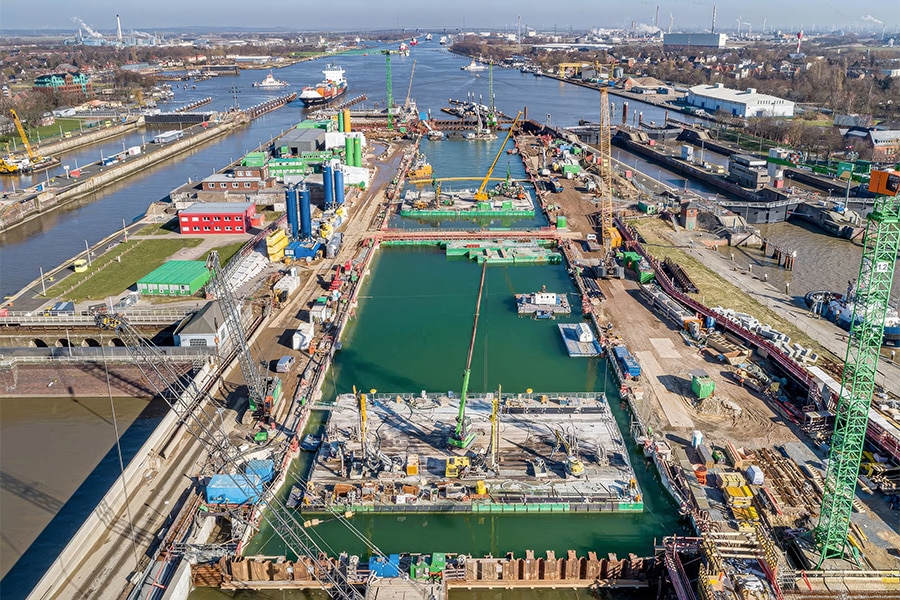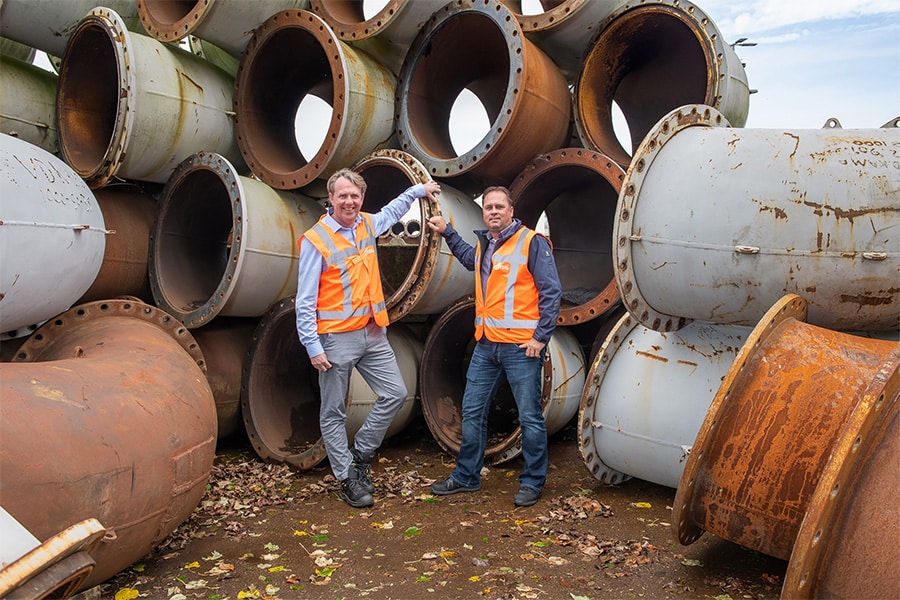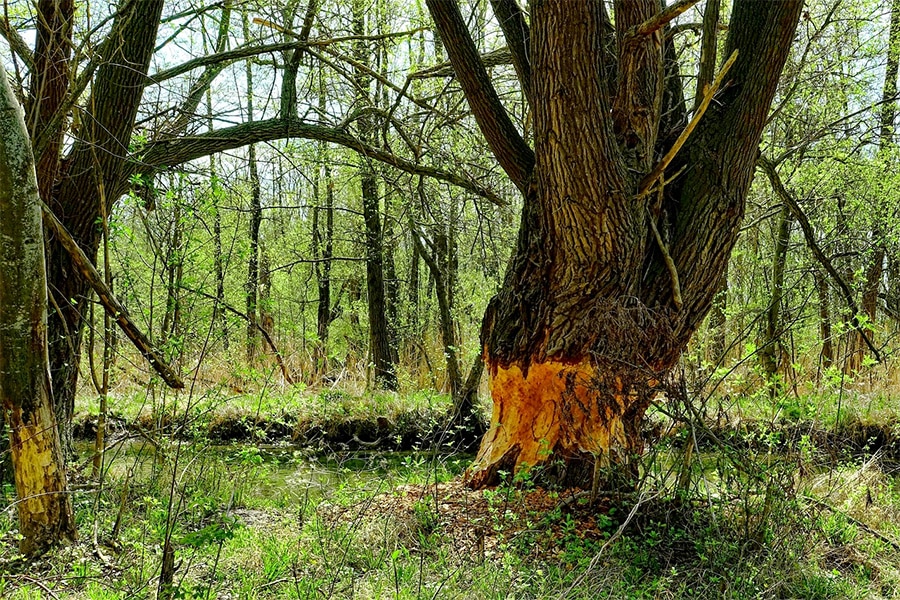
World first: wind turbines on primary seawall using Cutter Soilmix technology
Wind energy plays a major role in the transition to a fully sustainable energy supply. Especially on sea dikes there are good and strong wind conditions, which is good for renewable energy production and achieving sustainability goals.
innogy, developer, constructor and operator of renewable generating capacity in Europe and North America, and known in the Netherlands primarily with the Essent and Energie Direct brands, has a world first with wind farm Oostpolderdijk in Eemshaven: the company is having three wind turbines built here on a primary sea dike. The contractors Boskalis Netherlands and KWS Infra are carrying out the civil work for this, under the name "Ommelanderdiek.
Unique innovative concept in the wind industry
This innovative concept has not been appropriated before. A period of extensive engineering preceded it. ABT was involved in the project from the very beginning and ensured that all the parties involved, such as the water board, the province and the municipality of Het Hogeland, were on the same page. Vasco Veenbergen, geotechnical project leader at ABT: "People know us mainly for the large complex projects in non-residential construction, but we are also active in civil engineering, road, hydraulic engineering and infrastructure. About a third of our company is involved in wind turbines and dike improvement at a high and complex level. These activities have recently been transferred to WindBase as part of ABT."
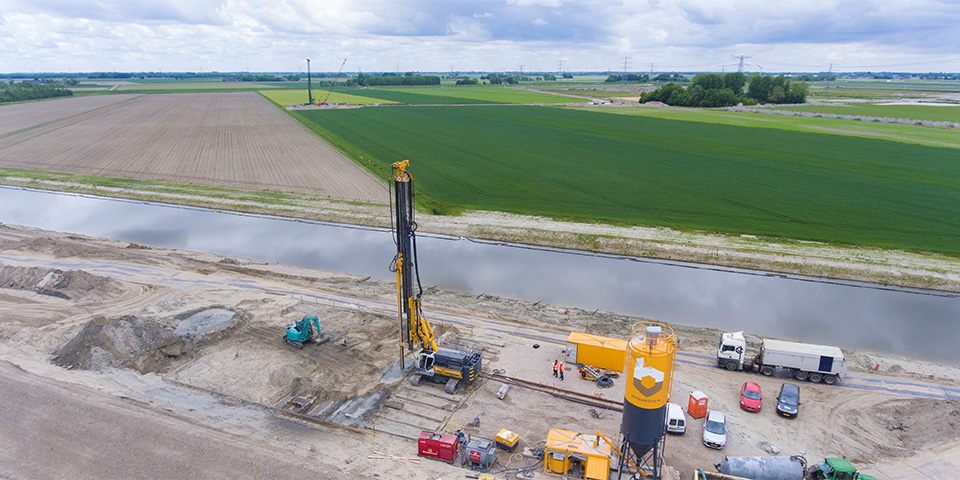
The production of the CSM panels at location Oostpolderdijk Eemshaven by BodemBouw.
Water safety is paramount
Says Veenbergen, "Our dikes are literally the separation between the land and the sea, so water safety should definitely not be compromised! Normally wind turbines are often placed on agricultural land, but placing them on the dike requires different preparation." Noorderzijlvest Water Board has made the sea dike available for placing the wind turbines. In addition to owning the dike, they are also supervisors of water safety. "It was carefully examined and calculated what foundation is needed and what techniques can be deployed," Veenbergen continues. "With the aim of not weakening the dike in the permanent situation, but also not during the execution of the work itself." A Mixed-In-Place technique had to be the way to go.
CSM technique applied to primary dam
The specialist in the field of underground construction using the revolutionary CSM system (Cutter Soilmix), is the company BodemBouw. Djordy van den Eijnde, project manager at BodemBouw: "Normally, our technique - adding cement mix to the existing soil - comes into its own best in inner-city projects. It is therefore good to see that the advantages - vibration-free, settlement-free, adding cement mix to existing soil - also come into their own on a primary flood defense system. Our gained experience in applying CSM in combination with clay is a huge plus on this project." Together with ABT, BodemBouw devised a routing and inspection plan that also guaranteed the safety of the dike during the construction phase. Van den Eijnde: "Good coordination with the contractor and consulting firm provides significant added value for the project. That which is designed must be realized and meet all requirements and for this a good basis is needed with mutual trust."
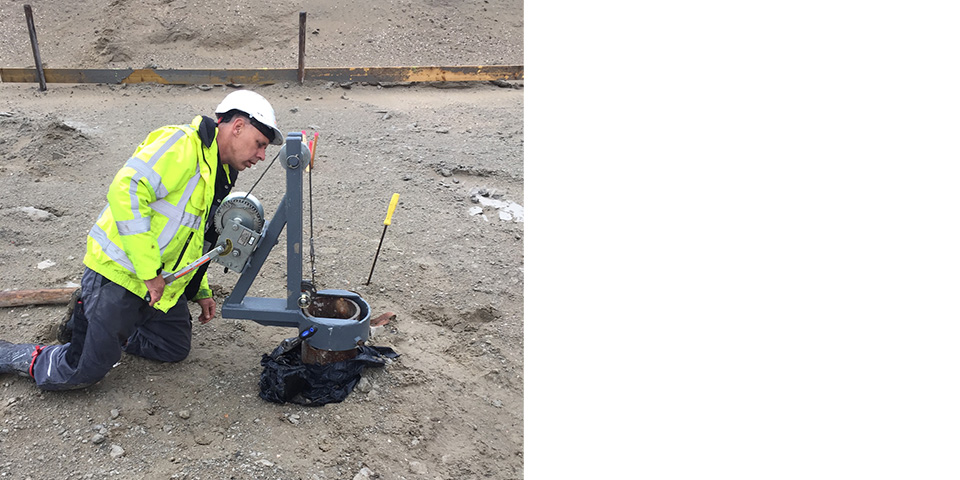
The creation of the liners by Soil Construction for the purpose of quality assurance. Using the liners, samples are taken from the entire panel and extensively tested in a laboratory.
Wearable substrate
The turbine creates static and dynamic loads on the subsoil, Veenbergen explains. "Vibrations from the turbine can cause softening of the topsoil which in turn can pose a risk to the flood control function. To prevent subsidence, soil improvement is needed. In the dike, loose CSM slabs are milled into the clay soil that will serve as soil reinforcement for the foundation of the wind turbines. The windmills will have a wide plate foundation that will lie on top of the CSM ditches. This also covers the risk of misalignment towards the canal behind due to the enormous load of the turbines."
Exceptional circumstances
Even exceptional circumstances must be taken into account, Veenbergen believes. "An ultimate high water level is often accompanied by storm which ensures maximum load on the wind turbine. That is why CSM panels are placed all around under the foundation and the CSM panels are not against each other so that (ground) water can flow between them. And in case of an earthquake, which can be a risk at this specific location, the turbine must be able to move with the dike. At this location, we mitigate that by specific placement of the CSM panels in the dike. Thanks to this optimized design, the CSM panels can deform along horizontally because they are not trapped in the deep sand. I can say that for me and my colleagues Thomas Lankreijer and Arie-Jan van Renswoude, this is the most complex calculation we have ever made."
Quality Assurance
These complex calculations must, of course, be tested. Van den Eijnde: "As quality assurance, a comprehensive monitoring plan is employed whereby SoilBuilding takes wetgraphs of the liquid mix. Also, liners are installed with which we take samples from the entire panel." Veenbergen adds: "The fabrication and placement of liners is a very important part because it determines the quality of the research results. BodemBouw is extremely skilled at carefully placing liners to extract reliable samples. In addition, thanks in part to their many years of experience, they have set up a perfectly worked-out inspection plan." Both wet grabs and liners are tested and assessed by a concrete laboratory. Even in the final phase, monitoring is still required to see how the vibrations compare with the calculations and adjustments must be made where necessary. The complexity of the project, in which all kinds of mechanisms (dike safety during high water, maximum load of the wind turbines during a storm and the risk of subsidence during an earthquake) are combined in one calculation, makes it unique. For the water board, too, this has become a unique innovative project, adding value to the sea dike without compromising its water safety function.
